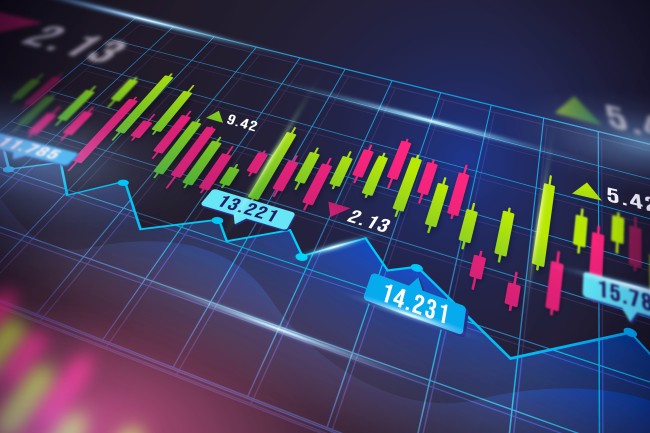Technology stocks are frequently high-risk, high-reward investments, with some companies becoming the next Amazon or Apple while others fail.
Technology exchange-traded funds (ETFs) mitigate certain risks by investing in a selection of technology equities instead of a single stock.
It increases the likelihood of reaping the benefits of a potential tech stock victor without risking the destruction of your portfolio if a tech stock loser exits the race.

What is a technology ETF
One type of ETF that focuses on technology businesses is the technology ETF. Tech ETFs consist of companies that manufacture and distribute hardware, such as computers, smartphones, semiconductors, and other electronics, as well as software, such as artificial intelligence, cybersecurity, and cloud technology.
Knowledge of technology ETFs
ETFs are a type of marketable security that follows the price of an underlying
- Index
- Commodity
- Bond
- Portfolio of assets
A sector ETF invests in the equities and securities of a particular industry, typically denoted by the fund’s name.
ETFs enable investors to add a specific market segment to their portfolio without selecting individual equities. In addition, ETFs mitigate the risks associated with investing in companies by distributing capital across an entire market.
Even if investors are unfamiliar with market nuances, tech ETFs help them gain a foothold. They’re viewed as a secure and straightforward method to enter the sector and offer a greater chance of a solid return.
If market participants wish to influence their technology stock investments, they want to turn elsewhere. ETF shares don’t provide much flexibility, as they monitor an index or commodity.
Why invest in technology ETFs
Tech ETFs are an attractive option for investors seeking high growth potential. Diversification reduces the risk associated with tech ETFs. It increases your chances of earning higher returns than investing in individual technology equities.
While it’s impossible to know whether investing in technology will result in enormous long-term gains, diversifying your portfolio through ETFs can help you mitigate risk.
ETFs greatly simplify the investment process.They attract investors seeking to reduce the risks of investing in individual equities and generate long-term income. Technology ETFs are a great choice for market participants interested in investing in this industry.

5 best performing tech ETFs
If you’re thinking long term, or if you’re simply aggressive and want a swing-trade success for 2023, here are some leading tech ETFs from the most popular exchange traded funds database to consider.
- First Trust NASDAQ Cybersecurity ETF (CIBR)
- Vanguard Information Technology ETF (VGT)
- Invesco S&P 500 Equal Weight Technology ETF (RYT)
- Invesco QQQ Trust (QQQ)
- VanEck Semiconductor ETF (SMH)
1. First Trust NASDAQ Cybersecurity ETF (CIBR)
Daniel Milan, an investment advisor representative at Cornerstone Financial Services, says that due to the inherent risks associated with a slowing economy and rising interest rates, as well as their impact on cyclical sectors, investors must be highly targeted within the technology sector in light of the current economic and equity market uncertainty.
He proposes directing resources toward cybersecurity, an area of technology that is rapidly rising in importance to business budgets.
The need for, and cost of, cyber security has skyrocketed in recent years, such that companies can’t afford to ignore it, as Milan puts it.
As a tech ETF, he favors CIBR. Its primary holdings are software and IT companies. Still, it also includes aerospace and defense companies, such as Thales SA (HO.FP), a defense and aerospace equipment manufacturer, and Booz Allen Hamilton Holding Corporation (BAH), a military contractor.
It’s still a limited play in the tech sector with only 35 holdings, but that narrow focus makes it easier to complement other parts of your portfolio.
2. Vanguard Information Technology ETF (VGT)
VGT is the largest sector-specific technology ETF with approximately $45 billion in assets. In the same way that QQQ has idiosyncrasies by including some stocks that aren’t Big Tech mainstays, VGT focuses heavily on more extensive tech stocks.
60% of the fund’s total assets are concentrated in the top 10 positions, with Apple Inc. (AAPL) and Microsoft Corp. (MSFT) accounting for 39% of the fund’s total assets between them.
On the positive side, this superior technology ETF has annual fees of only 0.1% or $10 per $10,000 invested. However, there needs to be more sophistication here.
3. Invesco S&P 500 Equal Weight Technology ETF (RYT)
Top-heavy funds typically result when the tech sector is dominated by titans and combined with market-cap-weighted ETFs. To counteract this, RYT uses an equal-weight approach, which assigns each holding generally the same weight regardless of the company’s size.
Some holdings account for 1.78 percent of the fund’s assets while others account for only 1.5 percent. Still, such minor differences are forgivable – mainly when other funds invest 20 percent of their assets in a single company.
This equal-weight approach results in a significantly more diversified portfolio, with only 15% of its total assets invested in the top 10 holdings.
This also results in a fund that is more skewed toward mid-caps than large-caps, with over 46% of its assets invested in medium-sized companies and only 38% in large companies. And titans receive less than 14%.
If you’re searching for a tech ETF with a genuinely diversified portfolio and a low expense ratio of 0.4%, RYT is worth a look.
4. Invesco QQQ Trust (QQQ)
QQQ appeals if you prefer a gentler introduction to technology over a full-on assault. Even though it’s not an accurate technology ETF, Invesco’s $161 billion fund provides investors instant access to the best technology equities of 2023.
It’s not solely a sector fund, as it’s benchmarked against the Nasdaq-100 index, which includes the 100 largest companies listed on the Nasdaq exchange.
Since this index has always been tech-heavy and excludes traditional U.S. equities listed on the New York Stock Exchange, such as JPMorgan Chase & Co. (JPM) and Johnson & Johnson (JNJ), the resulting fund is biased toward tech. In particular, 50% of its assets are in the technology sector, compared to 29% for the S&P 500.
5. VanEck Semiconductor ETF (SMH)
Despite recent underperformance, the collapse of global supply chains, and a shortage of chipmakers during the pandemic, investors have shown a growing interest in semiconductor equities.
Consequently, this prominent chipmaker-focused fund from VanEck has grown to nearly $8 billion in assets, up from just over $6 billion in January, even though traders have abandoned other tech ETFs.
This fund’s leading holdings consist of Nvidia, Taiwan Semiconductor Manufacturing Co., Ltd. (TSM), and Advanced Micro Devices, Inc.
Approximately 60% of this portfolio’s assets are held by the top 10 holdings. Consequently, if you wish to invest in this specific technology industry sector in 2023, SMH is the best semiconductor ETF to do so.
Selecting the right ETF

Given the perplexing number of ETF options now available to investors, it’s essential to consider the following factors.
Level of assets: To be considered a viable investment option, an ETF must have a minimum level of assets, with a standard minimum of $10 million. If an ETF’s assets fall below this level, there will likely be limited investor interest. As with stocks, low investor interest results in poor liquidity and broad spreads.
Trading activity: An investor must determine if the ETF under consideration trades daily in sufficient volume. Daily trading volume for the most prominent ETFs exceeds millions of shares. Some ETFs are hardly dealt with. Regardless of the asset class, trading volume is a fantastic liquidity indicator. In general, the higher the trading volume of an ETF, the more liquid it is and the narrower the bid-ask spread. These are particularly essential considerations when it’s time to sell an ETF.
Underlying index or asset: Look at the underlying asset class the ETF is based on. Diversification-wise, investing in an ETF based on a broad, popular index is advantageous instead of an esoteric index with a limited industry or geographical focus.
Tracking error: Although most ETFs follow their underlying indexes closely, follow them more closely. An ETF with minimum monitoring error is favorable over one with a higher error, assuming all other factors are equal.
Market position: The first ETF issuer in a given sector has a good chance of amassing the largest amount of assets before others hop on the bandwagon. It’s wise to steer clear of ETFs that are simply copies of an original concept. They fail to distinguish themselves from competitors and attract investor capital.
Benefiting from a technology ETF
Technology ETFs are a great choice, especially for investors seeking exposure to a market while limiting risks. Also, those new to the tech sector or more dedicated to a specific sector than an individual firm also find it beneficial.
While it’s true that the technology industry can be affected by market fluctuations, it’s expected to be the most popular investment option worldwide for the foreseeable future.
